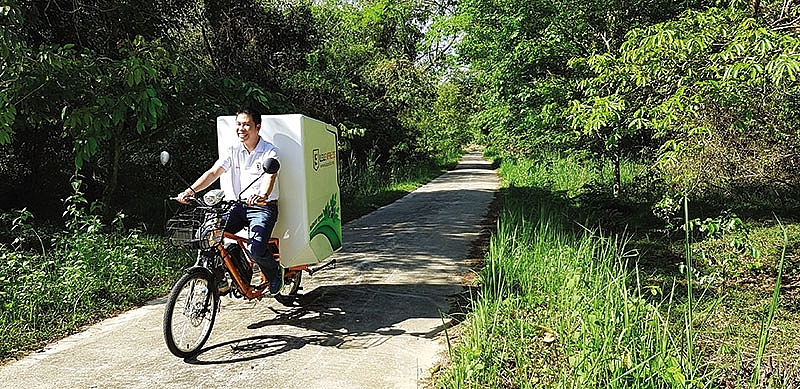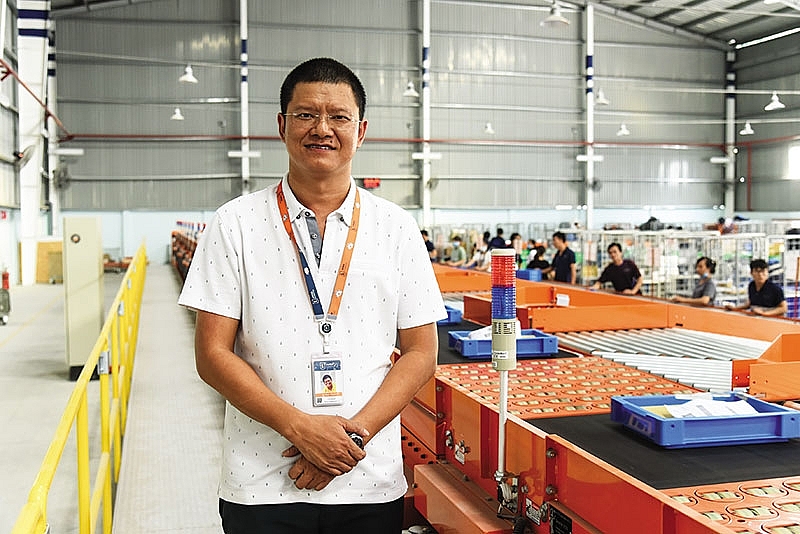E-commerce requires logistics reboot
 |
| With e-logistics growing in importance every day, firms and agencies are required to look to new solutions to ease the pressure on the environment and the transport system |
High pressure from e-commerce boom
According to the Ministry of Industry and Trade (MoIT), Vietnam is one of the world’s fastest-growing e-commerce countries. The country’s e-commerce market is growing by 35 per cent a year, 2.5 times faster than Japan’s.
California-based business consulting firm Frost and Sullivan forecast that the scale of Vietnam’s e-commerce market will increase from $1.6 billion in 2016 to $3.7 billion by 2020.
What is happening in the local e-commerce market now proves how lucrative it is. A number of global e-commerce giants, including Alibaba Group, JD.com, and Tencent, have been rushing to invest in Vietnam, while influential domestically-run groups, namely FPT and Vingroup, have invested strongly in e-commerce websites.
What’s more, cross-border trade is now the trend among countries worldwide. And Vietnam is not an exception, prospering on the back of its young population, the high rate of Internet users, and stable and high GDP growth.
In spite of that, e-commerce logistics, especially last-mile delivery companies, remains in the early days of development, thus failing to meet the growing demand of e-commerce and causing high pressure on the transport system and the environment, according to e-commerce logistics services providers and e-commerce companies.
If the scale of Vietnam’s e-commerce market increases to $3.7 billion by 2020 as expected, pressure on the transport system and the environment may become disastrous, if the weak development of e-commerce logistics remains unsolved.
Logistics firms now use motorbikes and trucks for their delivery services. Motorbikes are not designed for delivery, can carry only a limited volume, and each motorbike discharges a certain volume of carbon dioxide. When their business grows, more motorbikes and trucks will be used, meaning more traffic and more pollution threats to the environment.
For example, a motorbike discharges 2.27 kg of CO2 per 45 km, while the amount is just 0.238 kg of CO2 for each e-bicycle and 0.743 kg of CO2 for an electrically-run three-wheeler vehicle.
 |
| Vu Duc Thinh - Country manager, Lazada E-logistics Vietnam |
“The question is how we increase the capacity of e-logistics while easing the pressure when e-commerce continues to boom in the future,” Vu Duc Thinh, country manager of Lazada E-logistics Vietnam, told VIR.
“E-logistics is different from traditional logistics,” he said. “Changing the mindset and completing a legal framework on e-commerce and e-commerce logistics combined with the development of environmentally-friendly vehicles are the optimal solutions.”
Going green and sustainable must become a trend
Along with a number of international logistics groups, Lazada E-logistics Vietnam, which made its debut in late 2015, has decided to pursue a development strategy toward going green and sustainable by investing in environmentally-friendly vehicles and technology.
“We are operating dozens of e-bicycles for delivery services and are planning to widely develop this kind of vehicle to increase the number to several hundreds by the end of 2018. We are studying the investment in electrically-run three-and four-wheeler vehicles for distribution in the future,” Thinh told VIR.
“We have also invested in automatic sorting systems, which use robots to sort the parcels. We have operated one in Ho Chi Minh City and are going to open the second in Hanoi late this month. It will be the very first auto-sort system in Vietnam, with a capacity of tens of thousands of parcels per hour,” he added.
A survey by Momentum Works proves that the development of e-bicycles and electrically-run three-wheeler vehicles is the key to the success of e-logistics in China.
Investment costs and operation and maintenance costs of e-bicycles and electrically-run three-wheeler vehicles are lower than for traditional means of transport. Moreover, these vehicles can travel in narrow and crowded streets and call at many more locations, while long-term training is not required for drivers.
As shown in the survey, the volume of cargo each motorbike can safely handle is 0.25 cubic metres, lower than the 0.5-0.6 cubic metres of an e-bicycle and 1 cubic metre of an electrically-run three-wheeler vehicle. A change would significantly improve the productivity of a delivery person and reduce the number of vehicles on the road, thus helping to improve the traffic jam and environmental issue and giving the competitive edge to the delivery company.
Lazada E-logistics is ready to follow what the company believes to be an inevitable trend among logistics firms, which are focusing more on technology investment to grow green and increase competitiveness.
Lazada E-logistics and Lazada Group have recently sprouted more wings enabling them to fly high, as they have received an additional investment of $2 billion from Chinese tech giant Alibaba, thus increasing the latter’s total investment in the firms to $4 billion to date.
The green path is thus set, but how to develop it remains a big challenge, as three-wheeler vehicles are banned in Vietnam.
“We need support and detailed guidelines from government agencies to encourage Lazada E-logistics and others to widely develop electrically-run three-and four-wheeler vehicles in Vietnam in the future,” Thinh said.
Logistics firms in Vietnam are also facing other challenges. They include changing transport rules, cumbersome administrative procedures, years-long bans, low quality of human resources, a lack of e-logistics supporting services, and low application of technology.
A lack of diversified means of transport is another concern. Currently, motorbikes are mostly used for delivery services, despite their small handling capacity, while the operational efficiency of trucks remains low due to the high investment and operational costs.
“The government should have supporting policies to encourage logistics firms to boost application and development of innovative technologies and e-payment, as well as create a level playing field for logistics enterprises to partner and support each others’ development,” Thinh noted.
What the stars mean:
★ Poor ★ ★ Promising ★★★ Good ★★★★ Very good ★★★★★ Exceptional
 Tag:
Tag:
Related Contents
Latest News
More News
- Global partnerships key to Vietnam’s IFC development (December 26, 2025 | 16:18)
- Vingroup pulls out of bid to invest in North-South high-speed railway (December 26, 2025 | 11:42)
- Strengthening supply chains through trade promotions and customs reform (December 24, 2025 | 14:00)
- PM orders investment model for North–South high-speed rail (December 22, 2025 | 17:43)
- LS Eco Energy to invest in Vietnam rare earth sector (December 22, 2025 | 17:31)
- Government moves to establish International Financial Centre (December 21, 2025 | 21:00)
- Vietnam's IFC to target global investment flows (December 21, 2025 | 18:00)
- Two national hospitals expand capacity with new facilities (December 20, 2025 | 09:00)
- Ha Tinh breaks ground on major Vingroup industrial and energy projects (December 19, 2025 | 18:24)
- EVN launches major power infrastructure projects nationwide (December 19, 2025 | 18:17)























 Mobile Version
Mobile Version